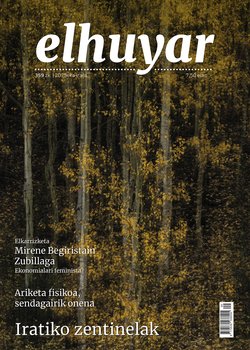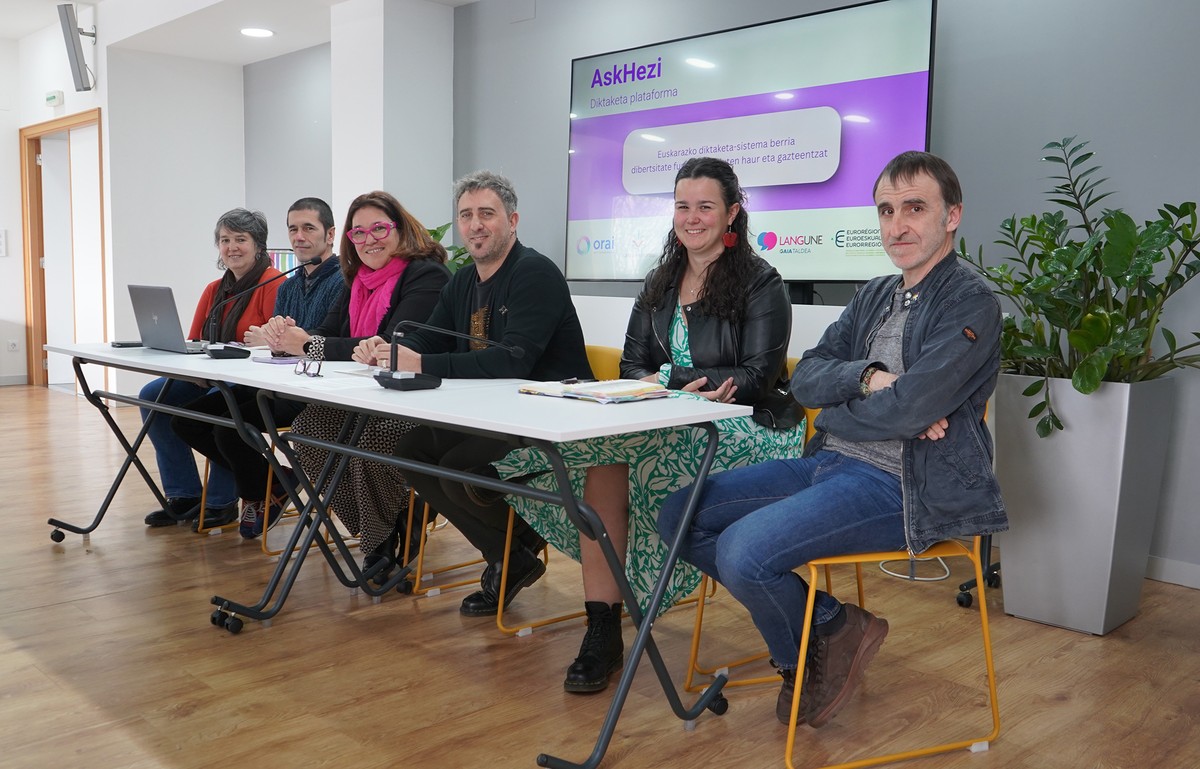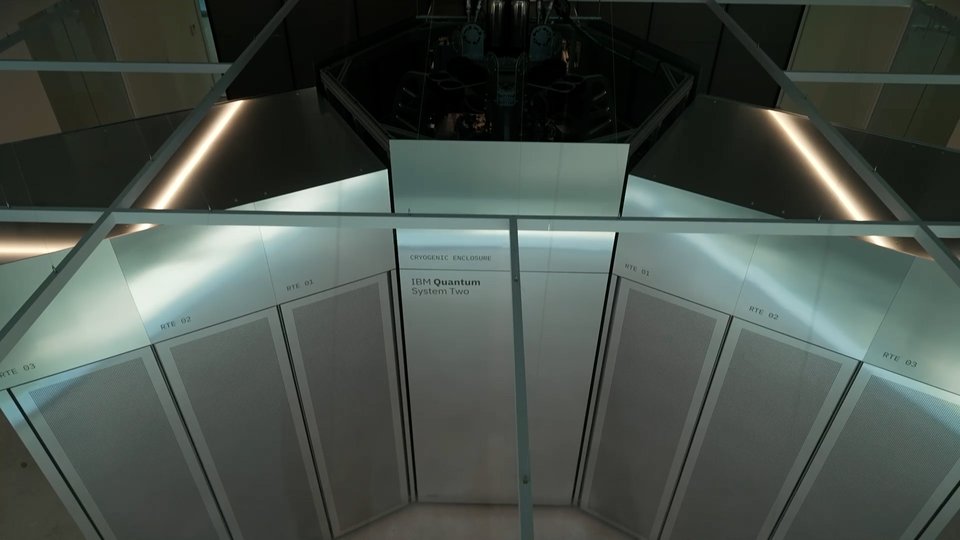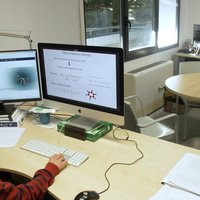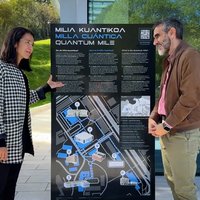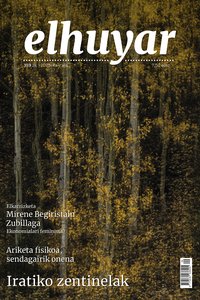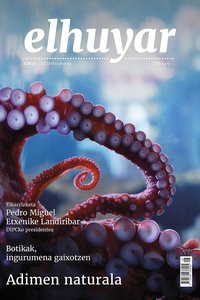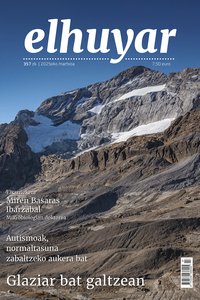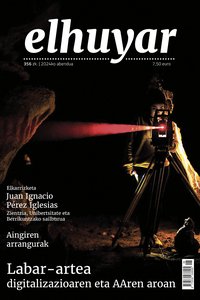AskHezi, Speech technologies at the service of Basque, children’s education and inclusion
Artificial intelligence and speech and language technologies can have controversial uses, but they have really useful applications that do not generate any doubt, such as those focused on minority languages and accessibility. AskHezi combines these and more: a system has been developed that allows writing in Basque to be done by dictation for children with motor problems in the use of keyboards. In the project, several networks of schools from all over the Basque Country have collaborated and we have carried out the development at Orai NLP Technologies.
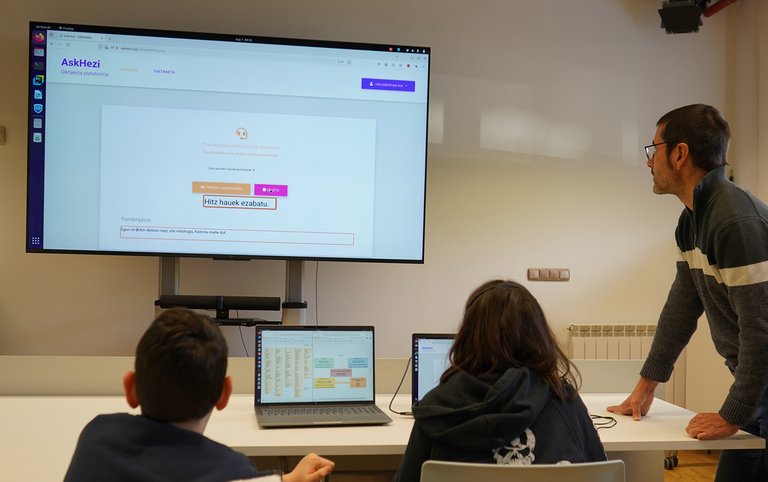
It is clear that language and speech technologies can contribute significantly to accessibility and contribute significantly to the inclusion of groups with functional diversity. And these technologies can also help the Basque language if they are also developed for our language. Orai NLP Technologies, created by Elhuyar, is at the core of the centre’s recognition of both Basque and accessibility, and in this section of the magazine we have already made frequent references to the works we have done in relation to these subjects: those people with difficulties in reading texts, based on TTS (Text-To-Speech) or speech synthesis technology, tools that allow them to listen instead of reading web content, such as the website bar reader, the Bidaide bilingual guide or the Automatic, Accessible Speech or Sub-Speech Generation Service, based on Web-Speech Technology or Automatic Speech Experts.
AskHezi, a project to respond to a need
The expert service, in fact, not only generates subtitles for a video or audio, but also transcribes directly what is called from the microphone, that is, it serves to write dictated by speaking, and works very well in Basque. In this connection, a number of requests came to us from schools in the Orai Centre, in different parts of the Basque Country, which, coincidentally or in a very short time, had heard about Expertos and whether children with mobility problems in their hands could use them to write school papers and texts. Of course, we were very pleased with the requests; what do we do if technology is not to help Basque, children and inclusion? But when we did the tests on the children, we all got a big slap in the face: Expert dictation doesn’t work so well with children’s voices. In fact, these technologies are based on neural networks that are developed trained with data, in this case with audio transcripts; and the collections of audio transcripts used for training are recordings of adults, and the voices of children are not the same as those of adults...
But it was also clear what the solution could be: training the automatic transcription system with children’s recordings. In addition, schools were also available to help obtain these recordings from children.
Thus, in 2022 a consortium was formed with a network of schools in the three administrative areas of the Basque Country: From the Basque Country, the Association of Ikastolas; from the North, the Seaska Integration Committee; and from Navarre, the Association for the Creation of Schools of the Public School Network. The technical work would be carried out and coordinated by Orai and the administrative and management work by the Langune Association of Language Industries. The aim, as has already been said, is to develop a system of dictation in which children can write in Basque.
The project received two years of support from the Euroregion Citizenship Call and another year from the SPRI Applied Artificial Intelligence Call. At the beginning of this year 2025 we have finished the development of the system and we presented it to the public on March 20.
Recordings: An Incredible Collaboration
The AskHezi project, in just over two years, has had several phases. The longest of them (which has lasted almost as long as the project) and has required a high participation of all the members has been the recordings. Orai developed a web platform to make recordings in the first place. This platform allowed a child to be engraved when reading a phrase that was shown to him and to send it to the collection of recordings.
Subsequently, each member of the consortium made a dissemination in the centres of its network, with the participation of about 50 centres. In each of them, several children, families and teachers were available to help. Parents had to sign consent documents, which were required by the Data Protection and Privacy Act. And with the help of teachers or parents, sometimes in schools and sometimes at home, about 480 children recorded about 150 sentences each. A total of more than 70,000 recordings were made, resulting in about 100 hours of audio that would be useful for training. All the members of the project have made a tremendous effort during this phase, and the results obtained have been as well.
Development: dictation and correction systems
Without waiting for the end of the recording process, and with it — after a minimum number of recordings — we began development at the Orai centre. The first phase was the training of automatic transcription models adapted to the voices of children. Different models have been tested, such as the more classic Kaldi modular model and the integral end-to-end Whisper model. Improvements have been achieved in both, i.e. better transcription of children’s voices has been achieved with both, and Whisper’s results are slightly better. Subsequently, in both cases, a direct and near-real-time transcription mode has also been developed. In addition, there is also a way to write numbers, dates, acronyms and the like in their natural written form (“2025” and not “two thousand twenty-five”, “PNV” and not “e a jota”...).
The next step has been to implement a system in which corrections can be made. In fact, even if you make a very good automatic dictation system, you will always make some mistakes, and even children will sometimes make mistakes when they are dictating to the system. But it was also necessary to provide a means of correcting these errors by speech without using the keyboard. In this way, the way of understanding and carrying out the usual correction commands has been implemented: “go to two words on the left”, “delete the five characters on the right”, “choose the phrase on the left”, “copy”, “undo”...
In any case, it was observed that some words that were incorrectly transcribed, even if deleted and tried again, were repeatedly incorrectly transcribed (for example, some special names, especially foreign ones), and the only way to solve this has been to allow spelling. But we realized that these automatic systems were confused with the spelling of letters in a single syllable (“e”, “be”, “de”, “ge”, “pe”, “te”...). It also happens to us, and when we give the letter of our identity card over the phone, we say things like “be de Bilbao”, and that is why the radio alphabet or other alphabets for military radio communications were invented some time ago. And in our case, the solution has also been to offer a lettering alphabet, giving as many possibilities as possible: each letter can be said in the normal way (“a”, “be”, “ce”...), using the international alphabet of airplanes (“alfa”, “bravo”, “charlie”...), using the Basque lettering alphabet proposed by Xabier Artola (“Araba”, “Babaiona”...) or by other people (“Bizkaia”).
The entire AskEduci system is offered through a web interface in which, after pressing the button to start the recording, the child will write everything he says in a box; he can go to make corrections or spelling at any time and return to the dictation at any time until the text that we wanted to write is completed.
Expansion: still to be done
All the members of the consortium are very satisfied with the dictation system developed during the AskHezi project and believe that the system will be very useful for children with functional diversity, and not only us, but also the parents of the children who came with the request, who have once again expressed their desire to start using it as soon as possible.
Well, here's the next step. The most modern neural network techniques are used in the AskEduci dictation system and, as we know, such systems have high resource requirements. They are not easy to run on normal computers, they have to run on powerful servers, and the more simultaneous users, the more powerful servers are needed. And these servers are usually very expensive.
So the challenge that we face now is to see how we can pay the costs of servers and their maintenance, or take advantage of the servers of public institutions. We are teaching AskHezi to the educational departments of the different administrations and we perceive a very good reception and attitude. Let us hope that we will be able to launch the AskHezi Basque dictation system as soon as possible and that all the children in the Basque Country and in any network who need one of these will be able to benefit from it.
Buletina
Bidali zure helbide elektronikoa eta jaso asteroko buletina zure sarrera-ontzian


